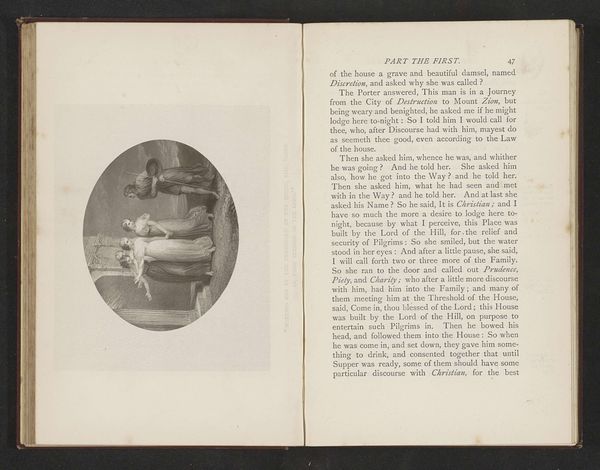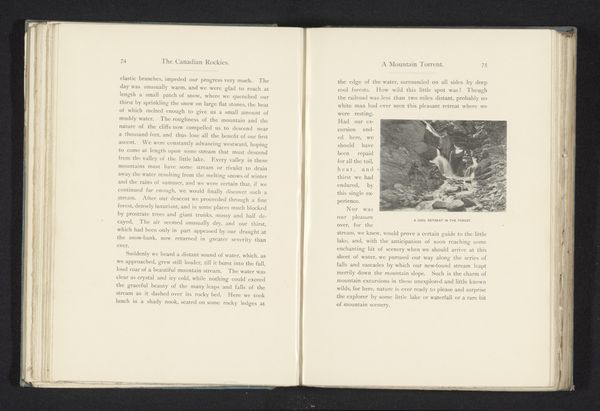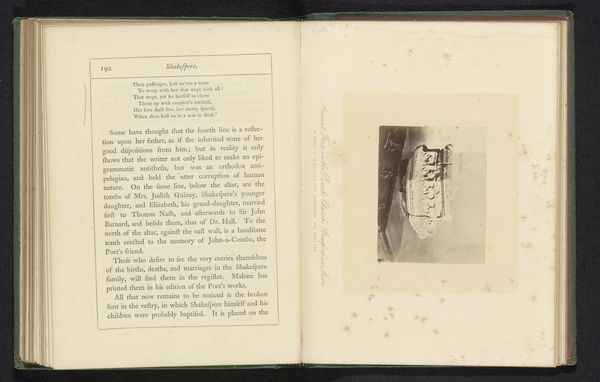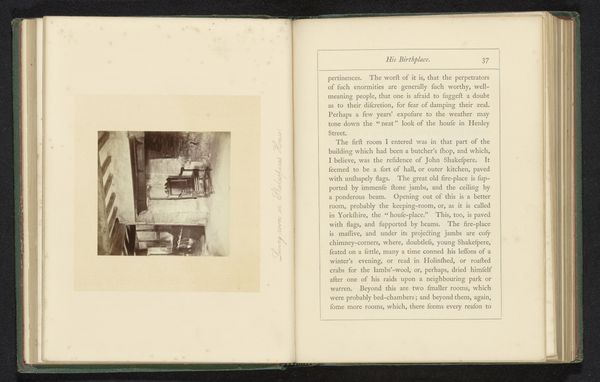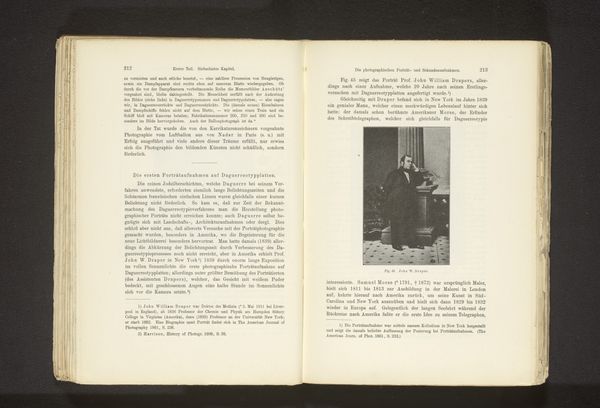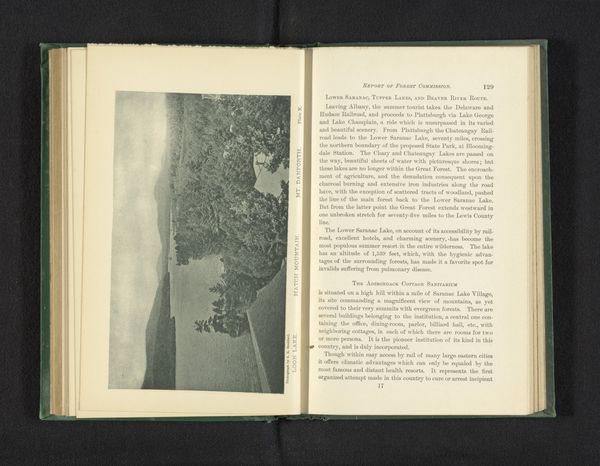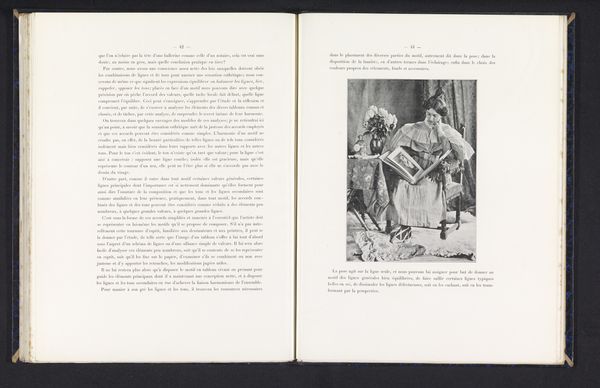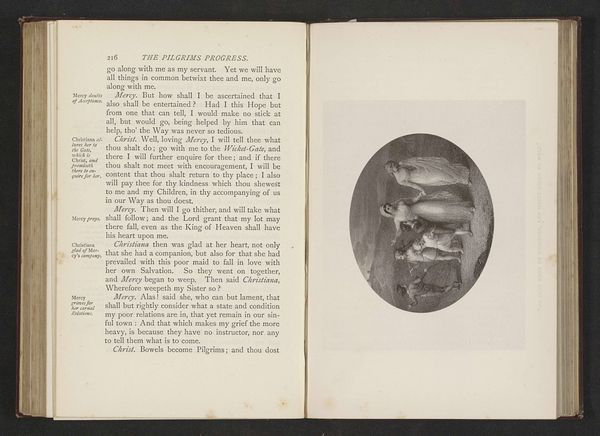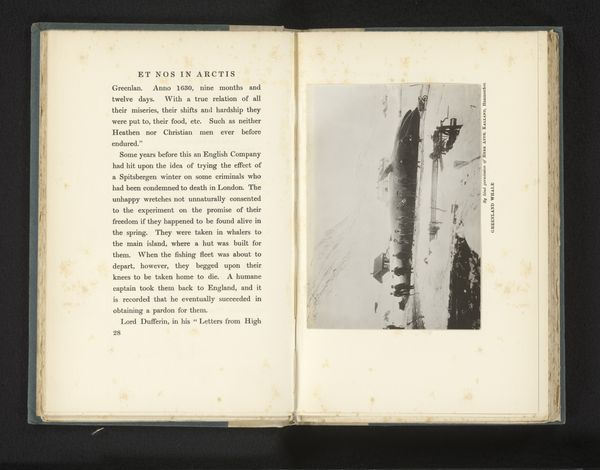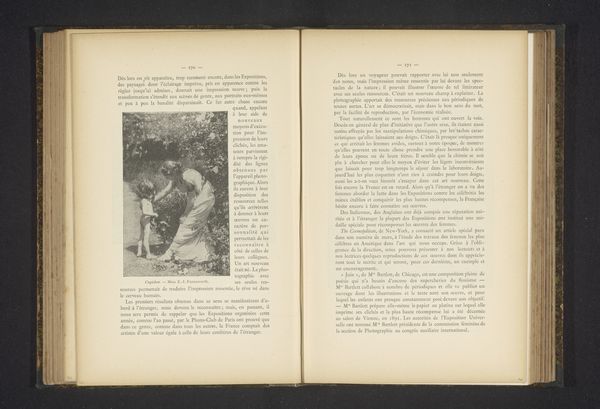
photography, gelatin-silver-print
#
portrait
#
aged paper
#
still-life-photography
#
homemade paper
#
paper non-digital material
#
paperlike
#
personal journal design
#
photography
#
folded paper
#
gelatin-silver-print
#
thick font
#
letter paper
#
paper medium
#
historical font
Dimensions: height 116 mm, width 161 mm
Copyright: Rijks Museum: Open Domain
Editor: Here we have Emma Justine Farnsworth’s gelatin silver print, “Jongen in bed met speelgoed,” likely made before 1895. It depicts what looks like a staged photograph of a child in bed beside his toys, printed in warm monochrome and framed inside an open book of text. It has a tender quality to it, wouldn’t you say? What symbols stand out to you in this image? Curator: I see not just tenderness, but the establishment of visual folklore. Notice how Farnsworth has presented an intimate moment – a child in his private world. But this world isn’t *entirely* private, is it? The placement of the toys suggests a deliberate curation. What might they signify about childhood, innocence, or even anxieties of the era? Editor: So, you think the arrangement is intentional? I hadn't considered that the objects themselves held meaning. It seemed more about capturing a sweet, sentimental moment. Curator: Consider that in the late 19th century, the concept of childhood was undergoing significant transformation. Photography played a key role in codifying and idealizing this vision. The 'still life' nature of the photograph also points to memento mori traditions; the preciousness of life, especially a child’s, captured for posterity. What narratives emerge when you juxtapose the photograph with the text on the opposing page? Editor: That juxtaposition really reframes it. The story gives context, making it feel like we’re looking at a character from a children’s book! Curator: Precisely. Farnsworth doesn’t just depict a boy; she constructs a tableau interwoven with broader cultural ideals and narratives. And consider this – aren't books, especially those shared between children and adults, often powerful carriers of memory and shared history themselves? Editor: This has given me a whole new appreciation for the piece. It’s far more layered and complex than I initially thought. Thank you! Curator: My pleasure. Remembering is an active process, and images like this help us reconstruct, and reconsider, what we thought we already knew about the past.
Comments
No comments
Be the first to comment and join the conversation on the ultimate creative platform.

